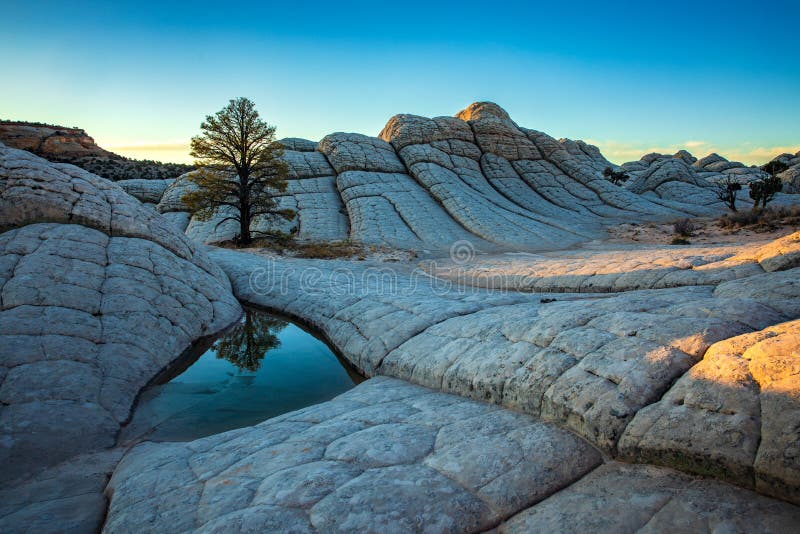In the Vermillion Cliffs National Monument area, Arizona, USA, there is an area of sandstone with extremely strange colors and shapes. This area is called White Pocket, also known as “cauliflower rock” , located deep in a desert.
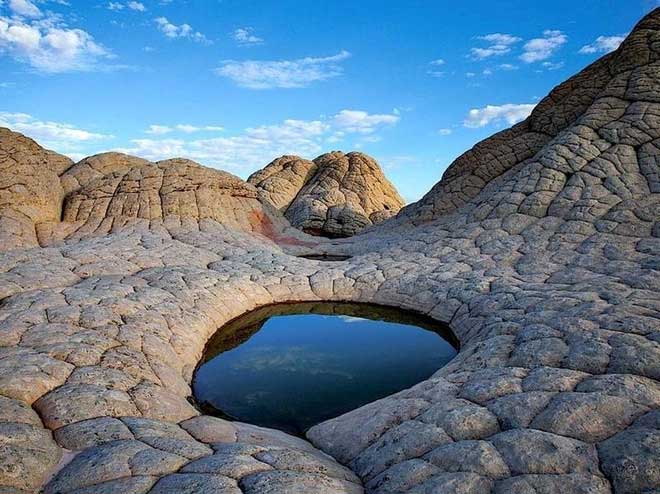
White Pocket sandstone region in the US.
The entire area is covered with a layer of strange gray-white rock that makes the landscape appear to be covered in pure frozen sugar. In some places, the layers of stone are completely twisted, like a giant marble “cake”.
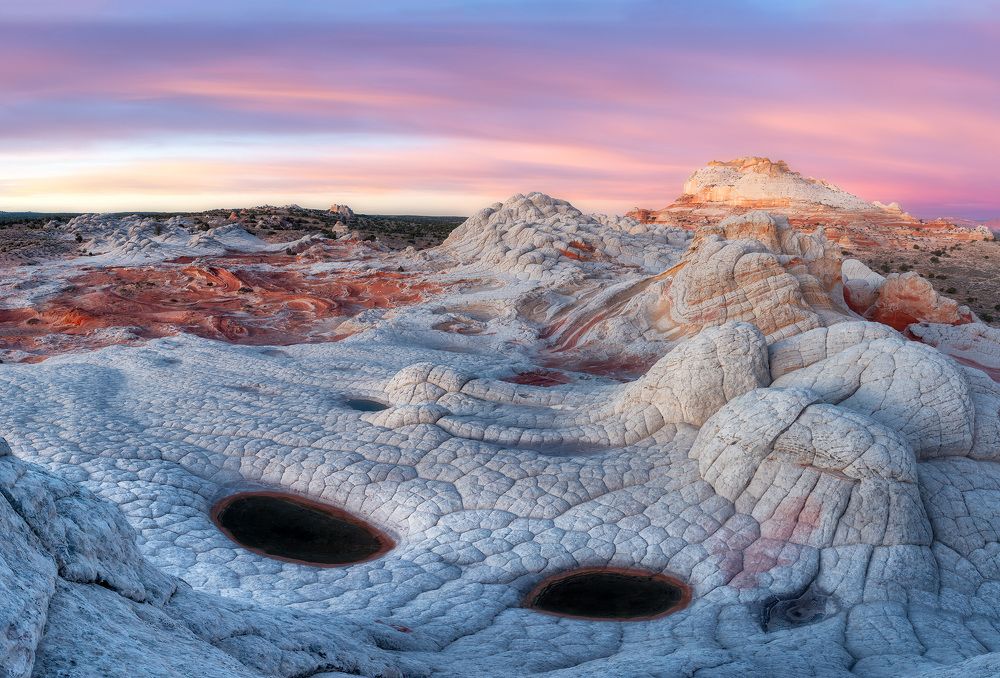
The strange geology of White Pocket is not easy to explain. Some geologists believe that the White Pocket is the result of “soft sediment deformation”, deformation that occurred during the Jurassic period while the sand was saturated and before the sand had completely turned to rock.

According to retired geologist Marc Deshowitz, who has studied White Pocket for many years, the landscape is the result of a giant sand slide, caused by an earthquake, breaking away from a high dune. and move quickly downhill.
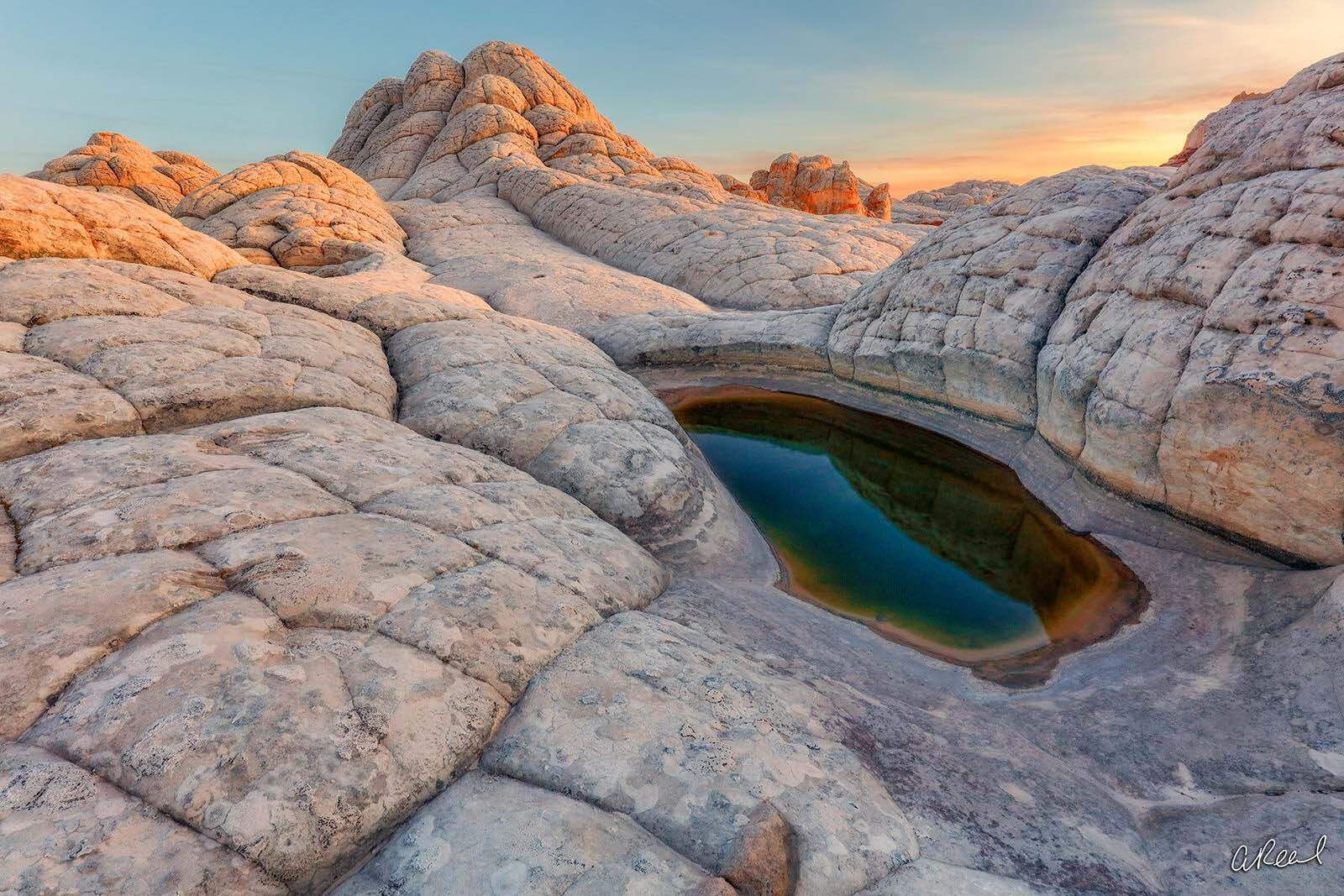
When large volumes of sand fall, it fills a large lake or oasis. This large block of sand is the distinctive gray-white sandstone or “cauliflower stone” seen today.
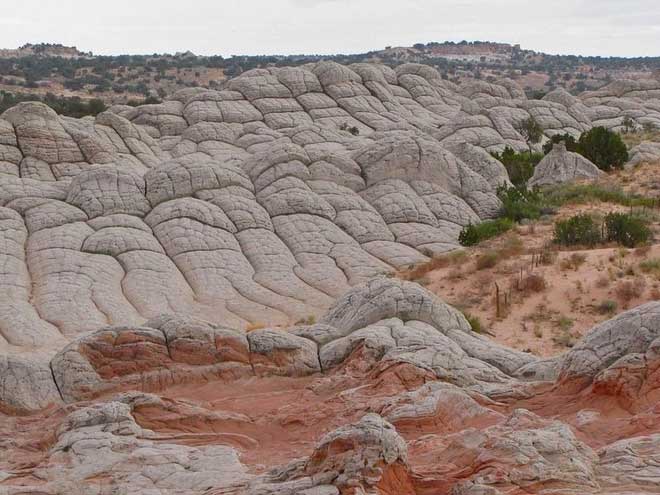
The landscape here is very strange.
Like at Coyote Buttes, some of the rock areas at White Pockets are fragile and could be damaged if too many visitors visit each day. However, fortunately, this “cauliflower rock” area is naturally difficult to access, so it is not too crowded with visitors.
